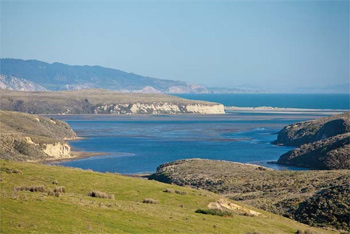High Country News, Op-Ed – November 23, 2012
We’re supposed to be celebrating here at Point Reyes, a foggy enclave along the Northern California coast about an hour’s drive and a world away from San Francisco.
Fifty years ago, President Kennedy signed the Point Reyes National Seashore into existence. For years, a national seashore had been little more than a pipe dream until Marin County supervisors agreed to turn the pristine dunes and beaches of this foggy peninsula into subdivisions and resorts. Locals saw what was coming — a four-lane freeway along the bucolic coast — and appealed to a higher power: Congress.
Thousands of grassroots activists and the nation’s leading environmental organizations took up the cause, eventually persuading a skeptical Congress to buy out the developers and ranching families at Point Reyes to create a new brand of national park — one within reach of millions of urban Americans.
At the time, spending taxpayer dollars to buy private land for a national park was unheard of. Traditionally, national parks had been carved out of far-off public lands. But at Point Reyes, the government paid local ranchers and speculators millions for their land. As part of the deal, longtime dairy and cattle operations were grandfathered into the park and have thrived.
With the Point Reyes National Seashore secured, advocates turned to protecting the park’s ecologically important areas under the newly adopted 1964 Wilderness Act. In 1976, Congress agreed that some 33,000 roadless and still-wild acres be added to the federal wilderness system. Drakes Estero, considered the ecological heart of the park, would become the jewel of the crown — the only marine wilderness on the West Coast.
Drakes Estero is home to one of the largest breeding colonies of harbor seals on the California coast. A dozen species of marine mammals live or migrate through the area. Endangered coho salmon and steelhead congregate in the Estero’s waters before running its tributaries to spawn. Birders have tallied more than 400 avian species here. Such remarkable diversity and abundance inspired the United Nations to name Drakes Estero part of the Golden Gate Biosphere Reserve.
The only thing standing in the way of full wilderness protection for Drakes Estero was Johnson’s Oyster Farm. The National Park Service had bought the ramshackle operation with plans to demolish it when a 40-year operating permit — granted to the Johnsons when the park was established – expired. That would happen on Nov. 30, 2012.
There were seven years left on the Johnson’s permit when the Drakes Bay Oyster Company took over the operation from the family in 2005. Since then, the company has been cultivating not only shellfish, but also powerful friends. California Democratic Sen. Dianne Feinstein took up their cause.
In 2009, California’s senior senator attached a rider to an appropriations bill to extend the oyster company’s lease. As a result, it is now up to Interior Secretary Ken Salazar to decide whether to uphold the 1976 wilderness legislation or renew the oyster company’s permit. That decision is imminent. Many legal experts believe it could lead to a precedent affecting not only wilderness at Point Reyes but also the law on National Wilderness Preservation.
In the few years since the Drakes Bay Oyster Company has come to Drakes Estero, federal and state agencies have cited the company for dozens of violations ranging from illegally operating in areas of Estero reserved for wildlife; to polluting the beaches with thousands of plastic tubes it uses to grow its nonnative clams and oysters; to expanding without permits. The company has accrued more than $60,000 in fines. Just last month, on Oct. 24, the California Coastal Commission began enforcement proceedings.
Over decades, park supporters on both sides of the aisle have worked together when Point Reyes was threatened, turning back plans for freeways, marinas and urban sprawl. Support for the park remains strong. When the Park Service issued its Draft Environmental Impact Statement on the oyster operation in Drakes Estero, it received over 52,000 public comments, and 92 percent of those comments favored wilderness over oyster production. Conservation and wildlife organizations have formed a national coalition to uphold the wilderness legislation.
Stewart Udall, the Interior secretary who did all he could to secure the support of President Kennedy and Congress for a Point Reyes National Seashore 50 years ago, said, “Over the long haul of life on this planet it is the ecologists and not the bookkeepers of business that are the ultimate accountants.” We’ll soon know if Secretary Salazar agrees. That will be something to celebrate.


